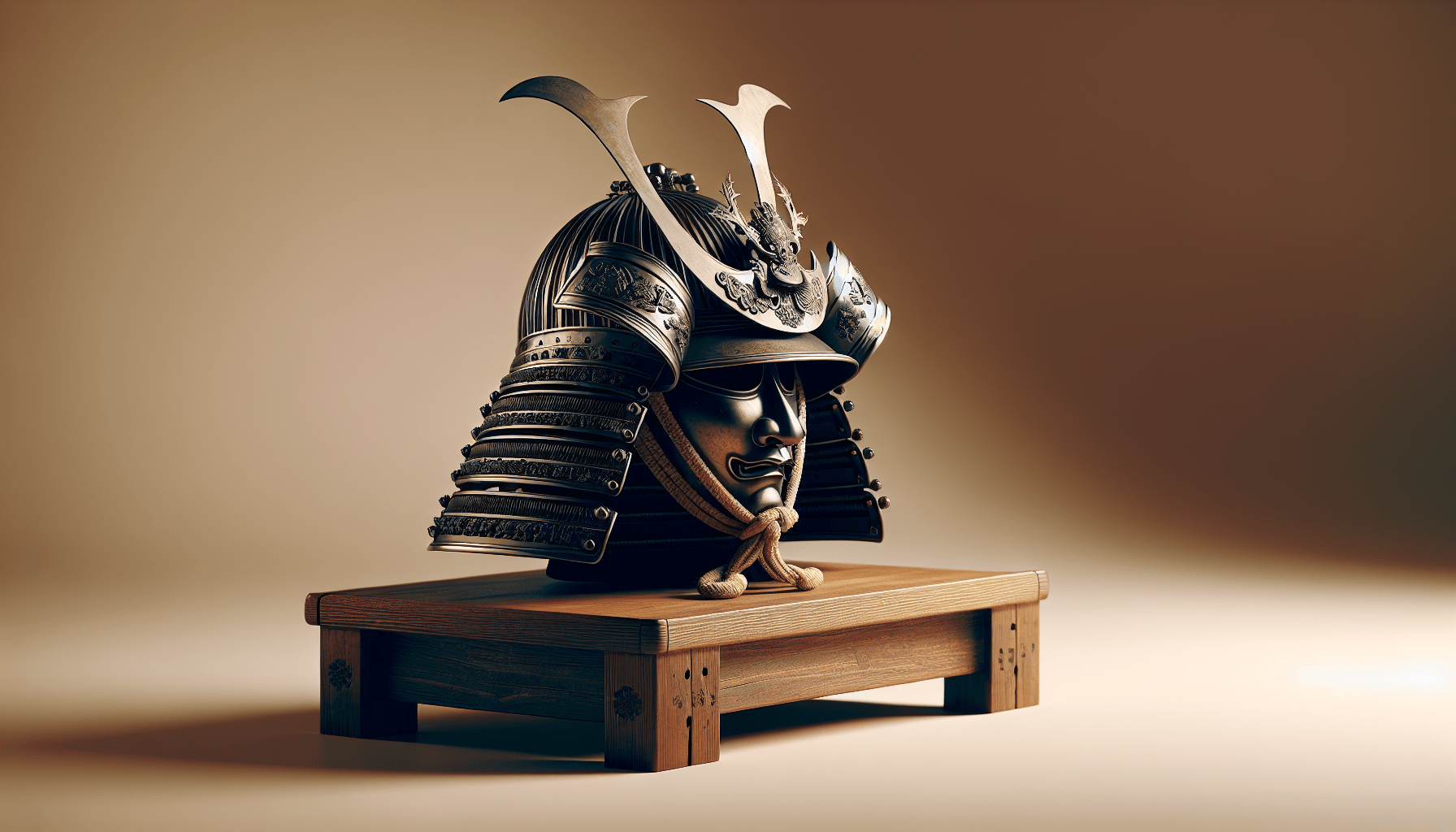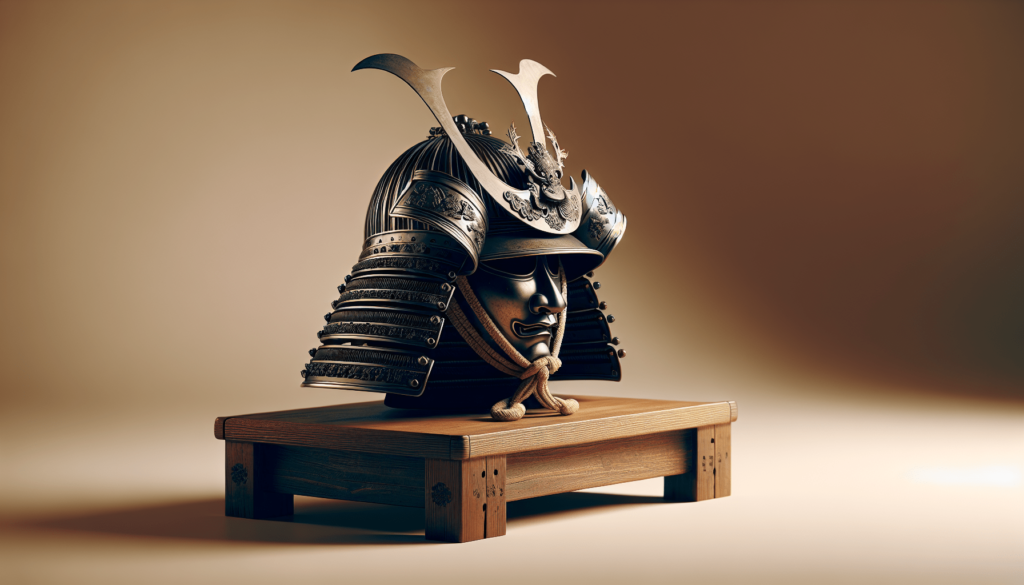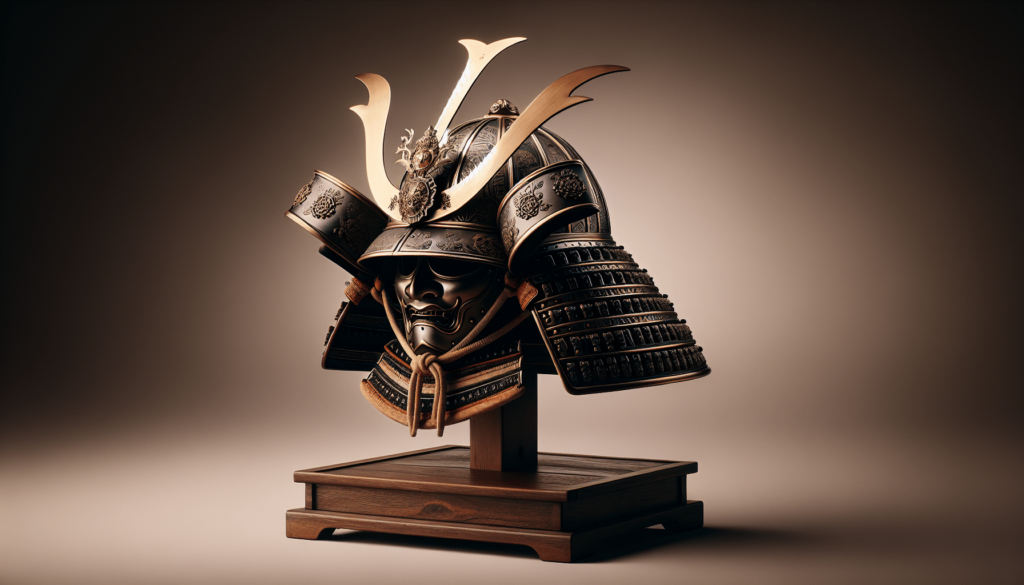
How can you tell if a samurai helmet is authentic or a replica? This is a question that many collectors, historians, and enthusiasts ask when they come across a piece that captures their imagination. Samurai helmets, or kabuto, are not only remarkable examples of craftsmanship but also hold significant cultural and historical value. In this guide, you will learn the nuances of identifying genuine samurai helmets versus replicas, ensuring that your collection is both authentic and valuable.
The Historical Significance of Samurai Helmets
Understanding the historical context of samurai helmets is crucial for identifying authentic pieces. Samurai helmets evolved over centuries, influenced by warfare, culture, and technological advances.
The Evolution of the Samurai Helmet
Samurai helmets originated in Japan during the Heian period (794-1185) and went through many designs and functions. Initially designed for protection in battle, their forms became more decorative and symbolic. By the Edo period (1603-1868), helmets were often worn in ceremonial settings and became works of art.
Craftsmanship and Materials
Authentic samurai helmets were crafted using high-quality materials like iron, leather, and lacquered wood. Each piece is typically handmade, showcasing the individual artist’s skill. Understanding the materials and craftsmanship involved can play a significant role in distinguishing an authentic helmet from a replica.
Key Features of Authentic Samurai Helmets
Knowing the unique characteristics of authentic samurai helmets can make a big difference in your assessment. Here are some key features to look for:
Design and Style
Each samurai helmet has distinct designs based on era, region, and the individual’s status. Some of the more common designs include:
| Design | Description |
|---|---|
| Suji Kabuto | Features riveted iron plates, providing robustness. |
| Nuri Kabuto | Made of lacquered materials, often highly decorative. |
| Mengu | A face mask often accompanying certain helmets. |
The Shin Guards and Neck Guards
Authentic helmets often have specific pieces such as shin guards and neck guards. Check to see if these parts are present and if they correspond correctly in style and design to the helmet itself.
Signature and Markings
Many artisans would sign their work. Look for inscriptions, maker’s marks, or unique stamps that can provide insight into the helmet’s authenticity. These signatures can be in kanji writing, which adds to the authenticity you desire.
Level of Wear and Tear
Genuine samurai helmets show natural wear and tear due to their age. Authentic pieces may have minor scratches, earthy tones, and signs of patina. Replicas, on the other hand, tend to appear too pristine or flawless. Remember that a little imperfection can signal authenticity.

The Replicas: What to Look Out For
While learning to spot an authentic piece, it’s equally essential to know the red flags of replicas. Here are some common characteristics that can help you differentiate:
Mass Production Signs
Replicas are often produced in large quantities, which means you’ll see identical designs across many pieces. If you happen to find multiple helmets that look the same, chances are they are replicas. An authentic kabuto will have variations, as each piece is usually unique.
Inauthentic Materials
Many replicas use inferior materials that don’t match the quality of genuine samurai helmets. If the helmet feels lightweight or the paint appears plastic, that’s a significant warning sign. Authentic pieces typically feel heavier and sturdier.
Inaccurate Design Elements
Not all mimic convincingly. Some replicas may feature exaggerated design elements that don’t align with traditional aesthetics or historical blueprint. It’s important to research existing authentic helmets and compare how closely a suspicious helmet adheres to those styles.
Resourceful Techniques for Assessment
Identifying an authentic samurai helmet requires keen observation and, at times, expert consultation. Here are some practical techniques you can use:
Consult Expert Appraisers
If you’re unsure about a piece, reaching out to a professional appraiser can save you a lot of trouble. They not only evaluate the helmet but can also offer detailed insights into its history and authenticity.
Research Provenance
Understanding where a helmet has been can greatly aid in proving its authenticity. Researching its previous owners, exhibition history, and any documented sales can give you better insight into its legitimacy.
Community Forums and Groups
Engaging with collector communities online or in-person can provide invaluable information. Many enthusiasts are willing to share their knowledge and can help you spot nuances that you might overlook.
Attend Shows and Exhibitions
Attending samurai armor exhibitions can give you a firsthand look at authentic helmets. Seeing them in person and asking questions can enhance your understanding and intuition.

Why Authenticity Matters
Purchasing an authentic samurai helmet is not just about having a collectible item; it is about preserving history and promoting cultural significance. Here’s why you should care:
Value Preservation
Authentic helmets hold significant historical value and can appreciate over time, making them a worthwhile investment. Replicas, while sometimes appealing, might not carry the same worth.
Cultural Respect
Owning an authentic piece means you are preserving a part of Japanese history and culture. It signifies your respect for the heritage associated with samurai warriors.
The Joy of Discovery
There’s something profound about discovering the real deal. Finding an authentic piece gives a sense of accomplishment and connection to the past that a replica simply can’t offer.
Understanding Market Trends
If you’re considering purchasing a samurai helmet, knowing market trends can help you make a well-informed decision. It can inform you about pricing, demand, and the likelihood of future value appreciation.
Auctions and Sales
Keep an eye on auction houses that specialize in Asian art or collectibles. You’ll often find prices that reflect current valuation trends, helping you understand what is reasonable when purchasing.
Online Marketplaces
While online platforms can offer good deals, exercise caution. Ensure to verify the seller’s credentials and look for reviews. Knowledge of market trends will be beneficial here, helping you avoid inflated prices for replicas.
Networking with Other Collectors
Cascading knowledge through conversations with fellow collectors can keep you updated about market highs and lows. Networking can lead to opportunities to purchase helmets before they hit the mainstream platforms.
Conclusion: Make Informed Choices
Navigating the world of samurai helmets can be exciting and rewarding. By understanding how to identify authentic pieces versus replicas, you can ensure that your collection not only holds true historical value but also enriches your appreciation of this remarkable culture.
Whether you are a seasoned collector or a newcomer, remember that every piece tells a story, and knowing the journey of these helmets can enhance your connection to the past. Always remember to do your due diligence, trust your instincts, and enjoy the rewarding experience of uncovering authentic treasures that narrate the tales of samurai warriors.



